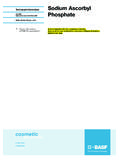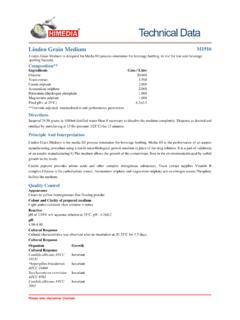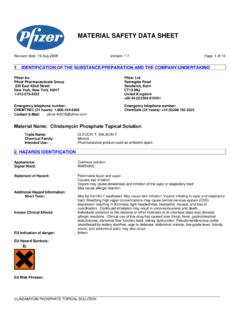Transcription of DEprotEction - VolumES 1-5 - Glen Research
1 DEprotEctionSupplEmEntJunE 2013 DEprotEction - VolumES 1-5In the last five Glen Reports, we have covered several aspects of oligonucleotide DEprotEction . We hope this series of articles will be helpful to the complete spectrum of oligonucleotide synthesis personnel from newcomers to seasoned veterans. Newcomers will find volume 1 on Page 2 most relevant and seasoned veterans will want to refer to volume 3 on Page 6 regularly. volume 2 on Page 4 will be of interest to all RNA synthesis people while alternatives to ammonium hydroxide can be found in volume 4 on Page 7. We have even added a more Research -oriented article covering on-column DEprotEction in organic solvents on Page 9.
2 Below is a listing of the articles and links to 1 - DePRotect to comPletIoN 2 volume 2 - RNA DEprotEction 4 volume 3 - Dye-coNtAINING olIGoNucleotIDes 6 volume 4 - AlteRNAtIVes to AmmoNIum HyDRoXIDe 7 volume 5 - oN-columN DEprotEction of olIGoNucleotIDes IN oRGANIc solVeNts 92 DEprotEction - volume 1 - DEprotEct to complEtion IntroductIon this article offers practical information that will help newcomers to the field of oligo synthesis to understand the various considerations before choosing the optimal DEprotEction strategy, as well as the variety of options that are available for DEprotEction .
3 It is not the intent of these articles to provide a comprehensive, fully referenced review of DEprotEction strategies in oligonucleotide synthesis - they are simply guidelines. for more detailed information, see, for example, the review1 by Beaucage and Iyer. this is the first of a series of articles on DEprotEction that will be posted on our web site. oligo DEprotEction can be visualized in three parts: cleavage, phosphate DEprotEction , and base DEprotEction . cleavage is removal from the support. Phosphate DEprotEction is the removal of the cyanoethyl protecting groups from the phosphate backbone.
4 Base DEprotEction is the removal of the protecting groups on the bases or modifier. there are many considerations when approaching oligo DEprotEction , as shown in the Box on the right. However, when reviewing the procedures available to deprotect any oligonucleotide, you must heed the primary consideration: First, Do No Harm. you can then proceed with confidence to Deprotect to Completion. FIrst, do no Harm! Determination of the appropriate DEprotEction scheme should start with a review of the components of the oligonucleotide to determine if any group is sensitive to base and requires a mild DEprotEction or if there are any pretreatment requirements.
5 Sensitive components are usually expensive components so it is imperative to follow the procedure we recommend for any individual component. for example, the presence of a dye like tAmRA or HeX will require a different procedure from regular unmodified oligonucleotides. similarly, an oligo containing a base-labile monomer like 5,6-dihydro-dt will have to be treated according to the procedure that is noted on the product insert (Analytical Report, certificate of Analysis, or technical Bulletin). occasionally, some products require a special pretreatment to prevent unwanted side reactions.
6 For example, amino modifiers use a special diethylamine pretreatment to improve the overall yield of the amino-labelled oligo. If the oligo has several unusual components, you must follow the mildest procedure recommended and, yes, things can get complicated fast. volume 2 will focus on this complex topic. RNA DEprotEction is unique because of the necessity to retain the 2' protecting group during cleavage and base DEprotEction . 2'-ome-RNA and 2'-f-RNA, however, are virtually identical to DNA during DEprotEction . But, if a hybrid oligonucleotide contains even a single RNA linkage (with the exception of a 3'-ribonucleoside linkage), the oligo must be treated as RNA.
7 See the appropriate RNA DEprotEction protocols: consideration for potential harm is loss of trityl group during vacuum concentration of the oligo solution prior to purification, which will reduce product yield. During evaporation the heat should be turned off the vacuum concentrator to avoid loss of the Dmt group. It should be noted that most Dmt-on purification protocols, including Poly-Pak and Glen-Pak , do not require evaporation of the DEprotEction solution prior to unique case for potential harm is an oligonucleotide containing a 5'-amine protected with the mmt protecting group ( , 10-1906).
8 In this situation, DEprotEction should not be carried out at > 37 c to avoid thermal loss of the mmt on classic synthesizers from Applied Biosystems, the cleavage of the oligo from the synthesis support can be carried out separately on the machine, prior to DEprotEction . As a result, many researchers still carry out the cleavage reaction separately and so the time required to do this is mentioned at the beginning of each DEprotEction section. However, most researchers do a one step cleavage/ DEprotEction reaction, which has the advantage of ensuring optimal yields.
9 The only downside to this strategy is the fact that the basic solution at elevated temperatures will dissolve a small amount of silica from cPG and a white insoluble residue will be apparent if the DEprotEction solution is evaporated to dryness. However, any residual silicate is easily removed by filtration, desalting or any purification procedure. deprotect to completIon the rate-determining step in oligonucleotide synthesis is more than likely the removal of the protecting group on the G base. Ignore this at your peril since, traditionally, one of the most common reasons for poor performance of oligonucleotides is the presence of a small percentage of the G protecting groups remaining in the final product oligonucleotide.
10 Chromatographic methods may miss the presence of the G protecting groups but these are readily revealed by mass spectral analysis. What are the options with attendant pros and cons for oligonucleotide DEprotEction ?Regular DEprotEction the cleavage reaction with concentrated ammonium hydroxide (28 to 33% NH3 in water), if carried out separately, is normally considered to be 1 hour at room temperature. DEprotEction using ammonium hydroxide is the most traditional method and dates back to the earliest days of oligonucleotide synthesis. one of the critical issues when using ammonium hydroxide, which is water saturated with ammonia gas, is to keep the solution fresh.








